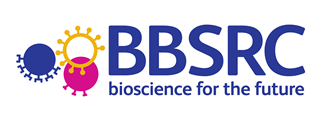TGbyS MyBait protocol using sequence capture probes
Target Enrichment Capture Probe Design
Probe selection for conversion to MyBaits® capture probes (MYcroarray, Ann Arbor, MI) was based on previously detected SNP markers which were validated on both the Axiom® HD Wheat Genotyping Array (Winfield et al., 2016) and Axiom® 35k Breeders Array (Allen et al., 2016). Probes were designed for SNPs which had a mapped location and were polymorphic in UK breeding material. A total of 30,334 biotinylated RNA capture probes were designed as 120mer exome specific probes around the Axiom®-identified SNP. For each SNP, two capture probes were designed, one to capture each allele. All sequence capture probes and associated data are available online here.Plant Material
Wheat lines were grown in peat-based soil in pots and maintained in a glasshouse at 15–25°C with 14-h light, 8-h dark. Leaf tissue was harvested 6 weeks after germination, frozen in liquid nitrogen and stored at −20°C prior to nucleic acid extraction. Genomic DNA was prepared using a phenol– chloroform extraction method (Burridge et al., 2017), treated with RNase-A (QIAGEN Ltd., Manchester, UK) according to the manufacturer's instructions and purified using the QiaQuick PCR purification kit (QIAGEN Ltd). The 31 varieties used in this study were as follows: Alchemy, Apogee, Avalon, Battalion, Cadenza, Caphorn, Chinese Spring, Claire, Cocoon, Consort, Cordiale, Evolution, Exsept, Galahad, Gallant, Gatsby, Glasgow, Gulliver, Hereward, Humber, Kielder, Mendel, Moulin, Opata, Paragon, Recital, Reflection, Rialto, Robigus, Savannah, Skyfall, Solstice, Xi 19. All varieties have been made publicly available through the Germplasm Resources Unit (www.jic.ac.uk/germplasm).Illumina Sequencing Library Preparation
Genomic DNA was mechanically sheared using a UCD-200 Biorupter (Diagenode, Holliston, MA) at 30s on/off intervals for a total of 32 minutes resulting in an average fragment size of 250bp. Fragments were purified using AMPure XP beads (Beckman Coulter Inc., CA, USA) and size distribution confirmed using an Agilent D1000 Tape Station (Agilent Technologies Inc., CA, USA). Barcoded sequencing libraries were prepared using the TruSeq Nano gDNA HT sample preparation kit (Illumina Inc., San Diego, CA) according to manufacturer’s protocol (TruSeq Nano DNA Library Prep Protocol Guide, 2015).Target Enrichment
In-solution sequence capture of multiplexed sequencing libraries was carried out using the MyBaits® custom kit (MYcroarray, USA) according to the manufacturer's protocol (MyBaits® user manual 3.01, 2015). For each variety, 100ng of library was taken into the capture, resulting in 3100ng total input for a 31-plex capture. The captured DNA library was released from the capture beads and amplified for 12 cycles using Illumina P5 and P7 specific primers (Meyer and Kircher, 2010). Post capture library size averaged 464bp including Illumina sequencing adapters.High Throughput Sequencing
Capture probe enriched sequencing libraries were sequenced on both the Illumina MiSeq and NextSeq 500. A MiSeq v3 Paired End 2x300bp kit and a NextSeq500 2x150bp High-Output v2 kit (Illumina, USA) were used respectively with a final library concentration of 10pM and 1.6pM respectively which included 5% PhiX control library. All reads are available from NCBI sequencing read archive using project accession PRJNA349252.Based at the University of Bristol with support from BBSRC.

